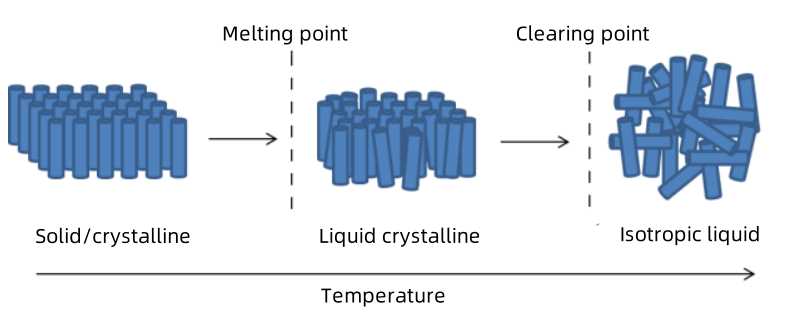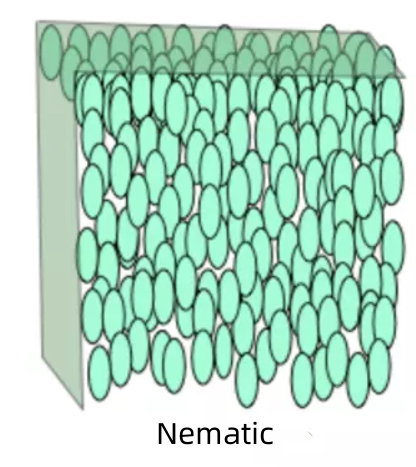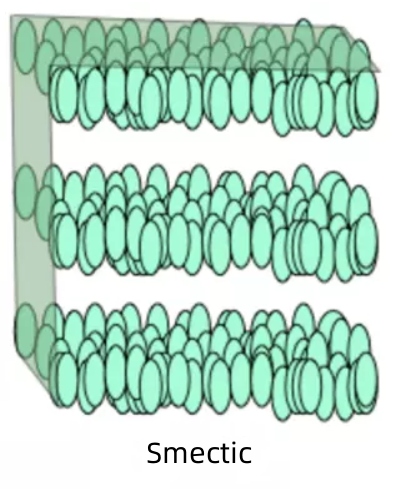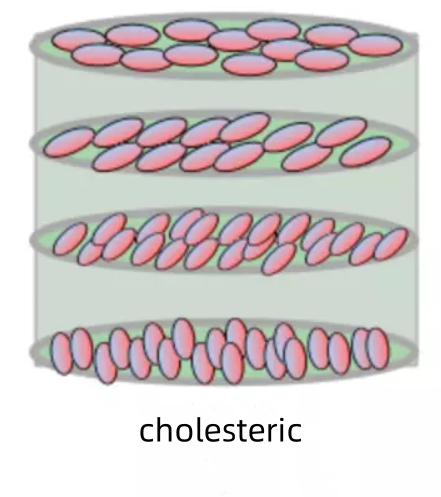Liquid crystal display (LCD)device is one of the most mature and widely used display devices among many flat display devices. It has been industrialized and is still developing rapidly. This is determined by a series of incomparable characteristics of the liquid crystal itself (What are the excellent characteristics of LCD monitors?) and the development of related supporting technologies.
Liquid crystals exist in a wide range of fields. There are no fewer than thousands of liquid crystals that have been discovered or synthesized. In summary, liquid crystals can be divided into two categories: thermotropic liquid crystals and lyotropic liquid crystals. Since lyotropic liquid crystals are not easy to apply in display technology, this article only introduces thermotropic liquid crystals in detail.
The so-called thermotropic liquid crystal is a substance that becomes liquid within a certain temperature range due to "heat". Figure 1 shows the material forms of thermotropic liquid crystals in different temperature ranges.

(Figure 1)
The liquid crystal materials used in liquid crystal display devices are thermotropic liquid crystals, so liquid crystal display devices must be stored and operated within a certain temperature range. Once this temperature range is exceeded, the liquid crystal material in the device will lose its liquid crystal state, which may cause the device to temporarily fail to work, or may cause damage to the device.
According to the different orderly states of molecular arrangement, thermotropic liquid crystals can be divided into nematic liquid crystals (Nematic, also known as filamentous liquid crystals); smectic liquid crystals (Smectic, also known as lamellar liquid crystals) and cholesteric liquid crystals (Cholestevic). , also known as spiral liquid crystal).
1)Nematic liquid crystal
Figure 2 shows a schematic diagram of the ordered state of nematic liquid crystal molecules.

(Figure 2 )
Nematic liquid crystal is the most widely used liquid crystal in display devices. The molecules of nematic liquid crystals are all rod-shaped, which is also the structural form of most liquid crystal molecules.
From a macroscopic perspective, nematic liquid crystals show that their molecular centers of gravity are disordered and can move in three dimensions, so they can flow like a liquid. But the long axes of all liquid crystal molecules generally point in one direction. This gives nematic liquid crystals the optical properties of typical uniaxial prisms and significant dielectric anisotropy electrically.
If an external electric field is used to control the nematic phase molecules with dielectric anisotropy, changing the ordered state of the liquid crystal molecules will naturally change the optical properties of the liquid crystal, thereby realizing the modulation of the liquid crystal to external light and achieving the purpose of display.
2)Smectic liquid crystal
Figure 3 shows a schematic diagram of the ordered state of smectic phase liquid crystal molecules.

(Figure 3 )
The molecules of smectic liquid crystals are also rod-shaped, so when the temperature increases, they can generally transform into the nematic phase. As can be seen from the figure, smectic liquid crystal molecules are arranged in layers, and the long axis direction of the molecules in each layer is consistent. The viscosity of this liquid crystal phase is higher than that of nematic liquid crystal. Optically positive birefringence.
3) Cholesteric liquid crystal
Figure 4 shows a schematic diagram of the ordered state of cholesteric liquid crystal molecules.

(Figure 4 )
As can be seen from the figure, cholesteric liquid crystals have the following three characteristics.
(1) The molecular arrangement in a plane is generally consistent.
(2) In the vertical plane direction, each layer of molecules will rotate at an angle. The direction of rotation can be left-handed or helical. When rotating 360°, we call this distance a pitch.
(3) The pitch will change with different conditions such as external temperature and electric field. At an appropriate temperature, the pitch will be close to a certain wavelength of light, thus causing Bragg scattered light to appear in a certain color.
In recent years, people have discovered that the unique optical properties of cholesteric liquid crystals, such as optical rotation, selective light scattering, and circular polarization dichroism, have special significance in display technology.
For related knowledge about LCD screens, please click on the following link:
What are the excellent characteristics of liquid crystal display devices?